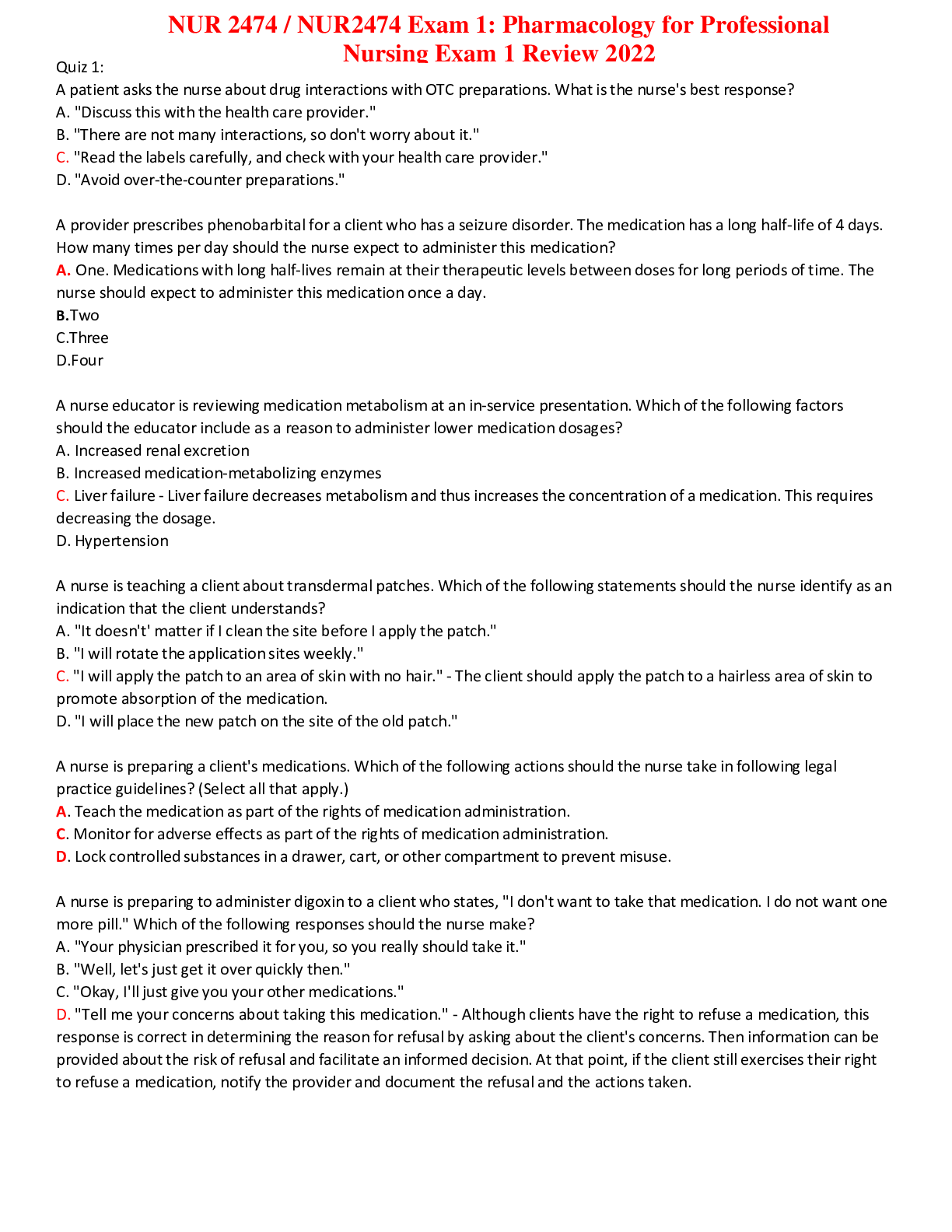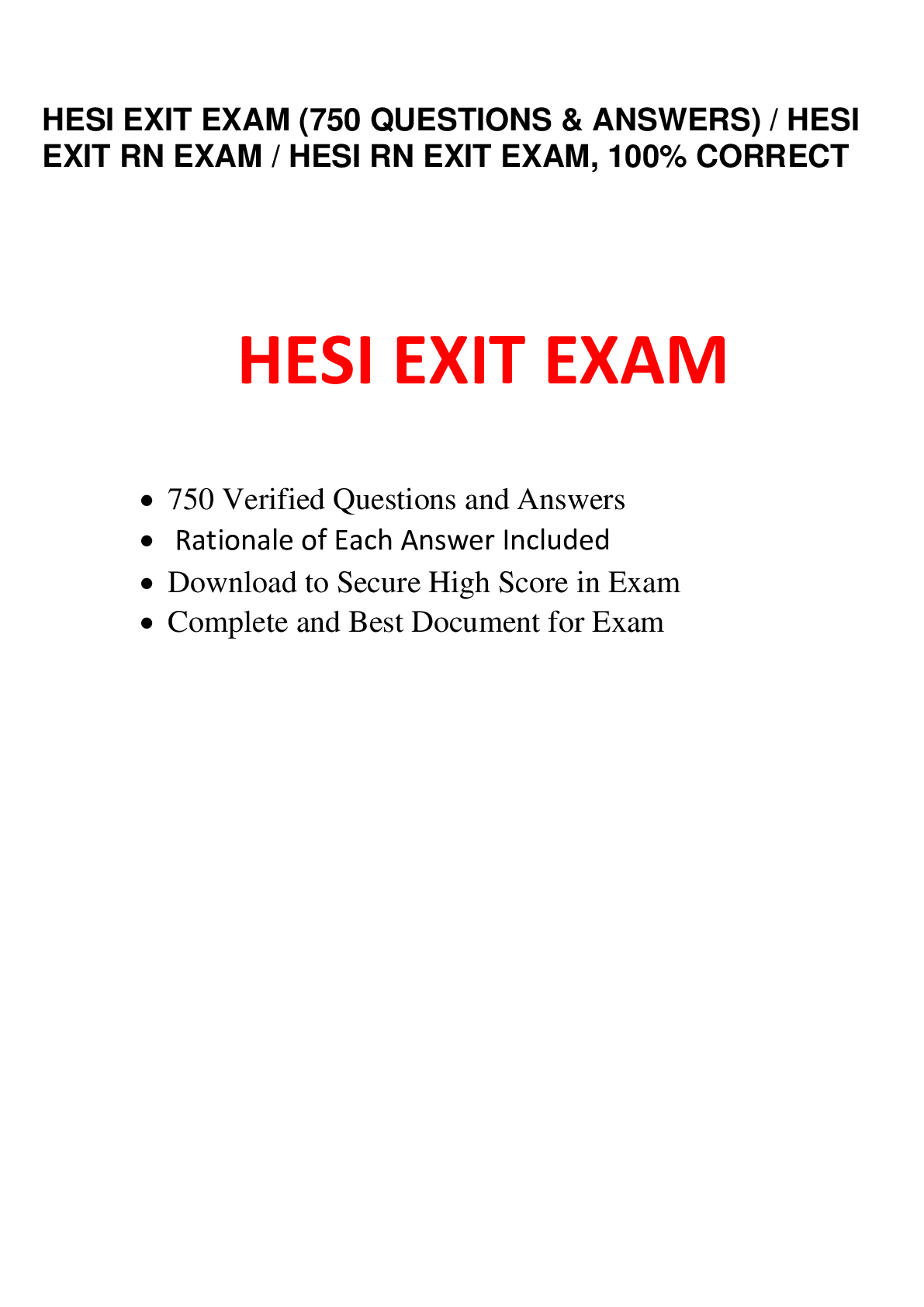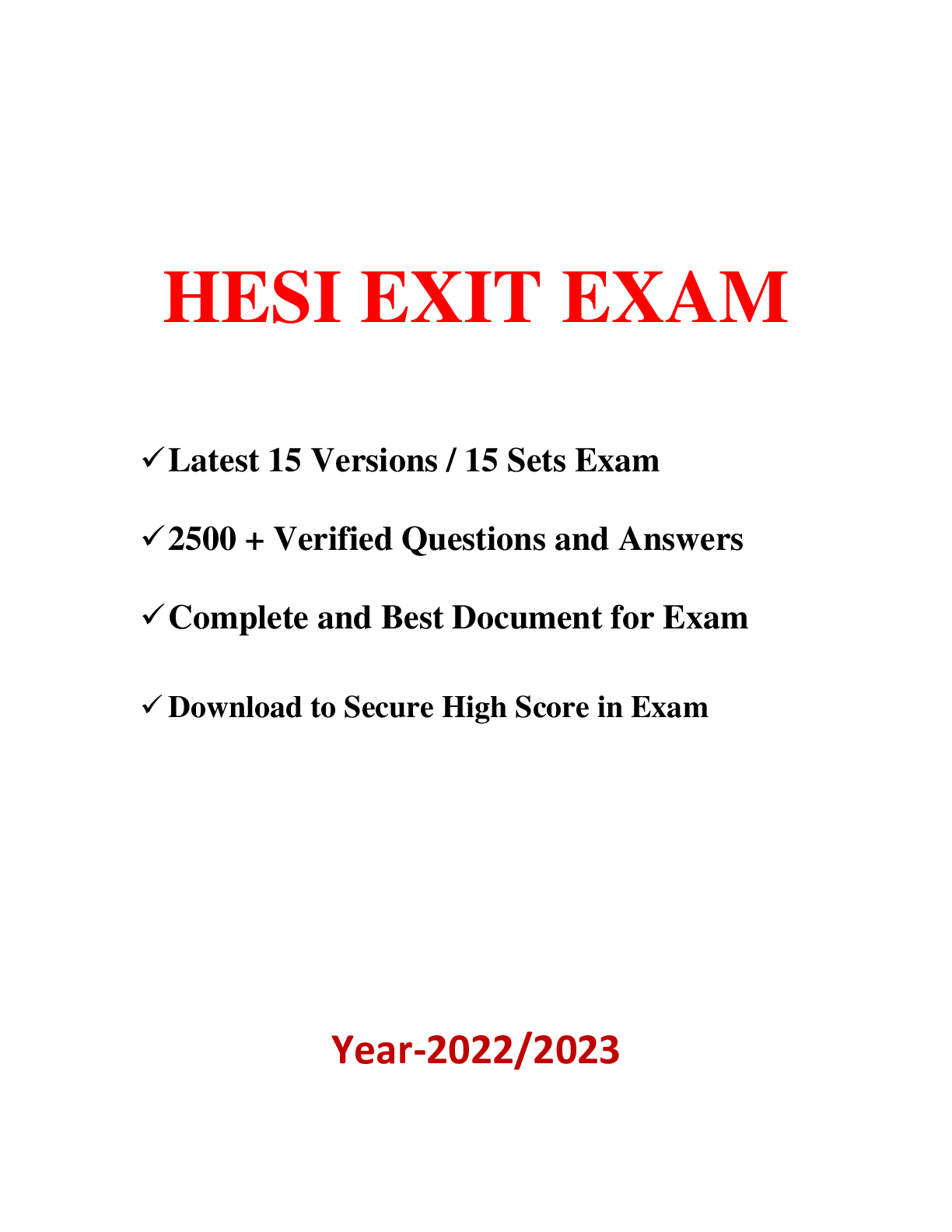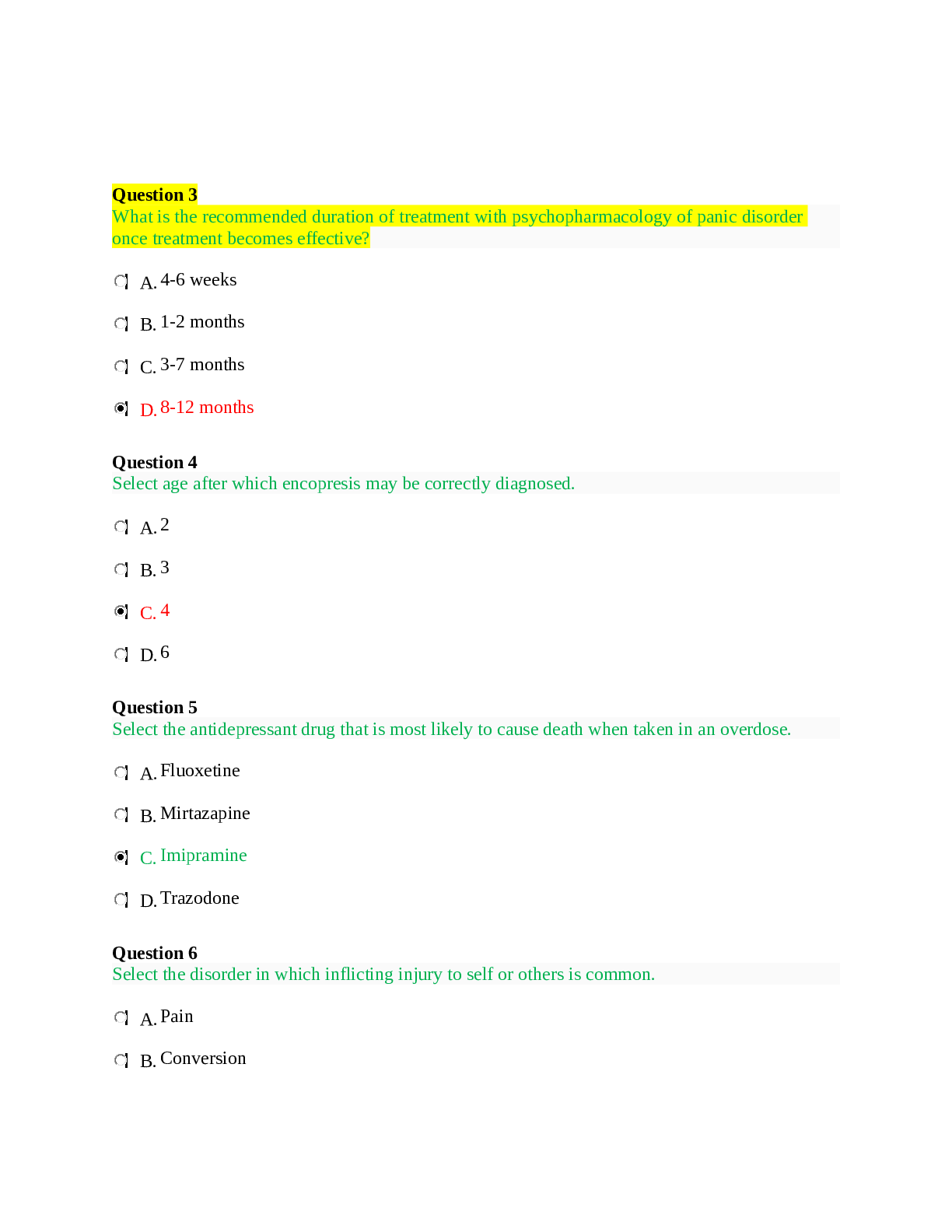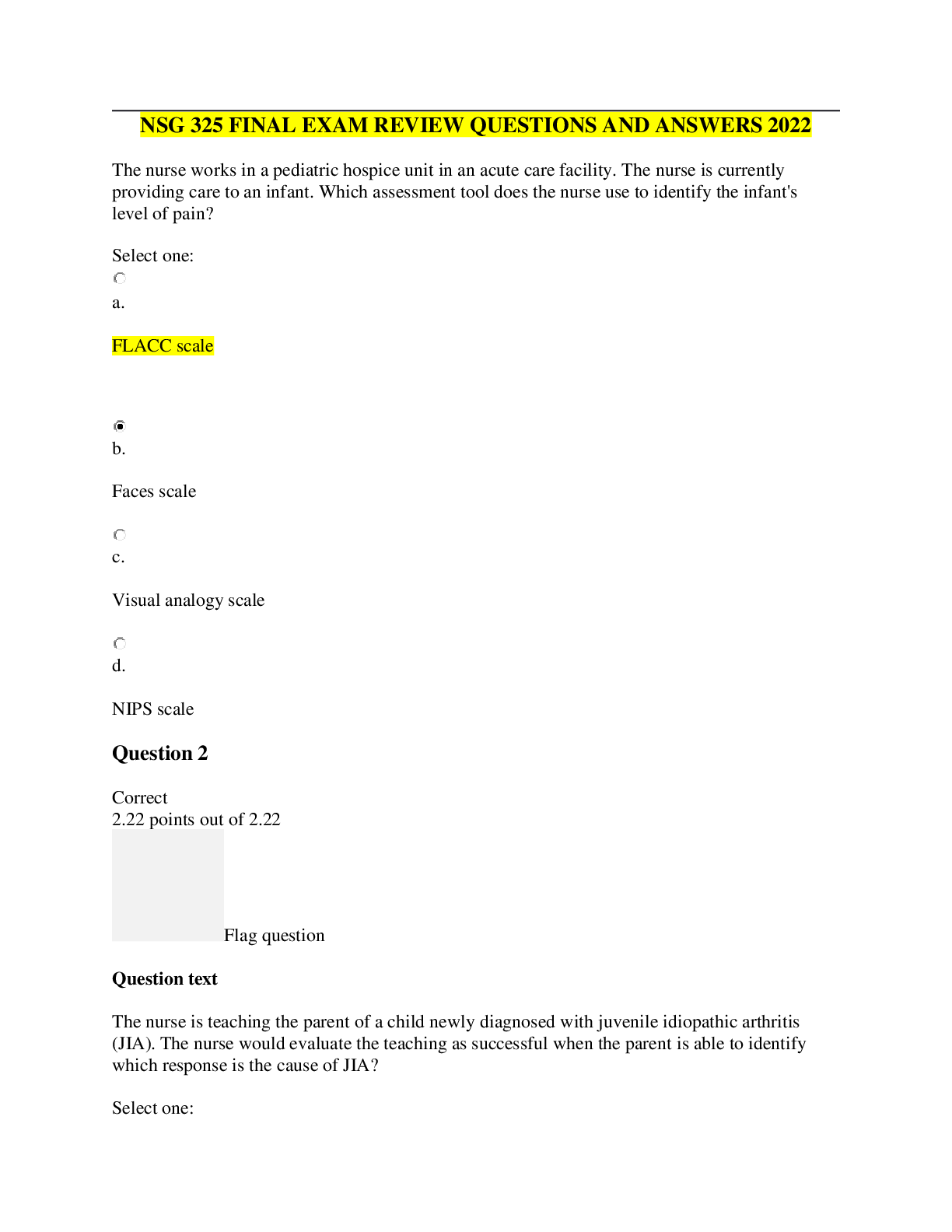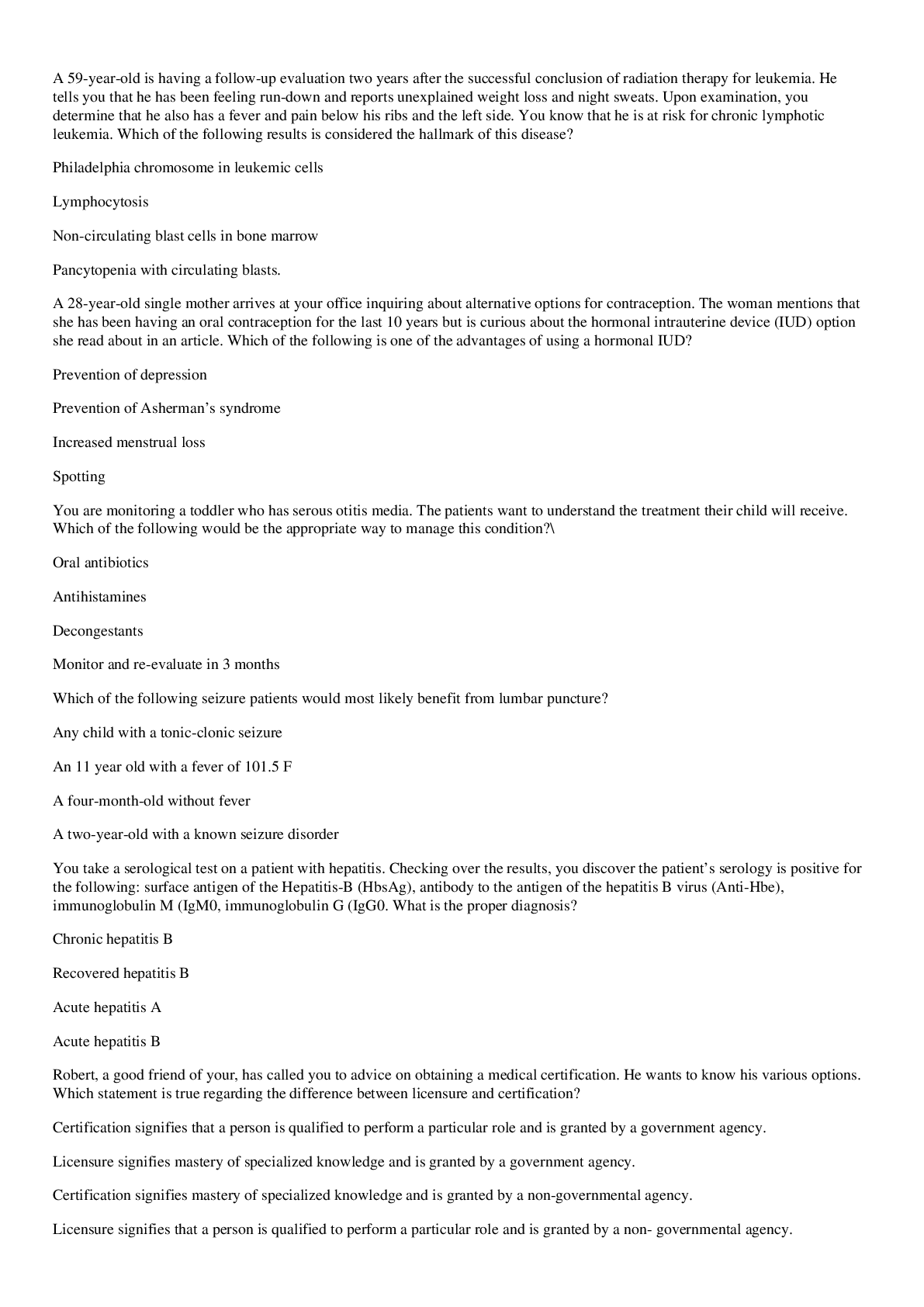*NURSING > EXAM REVIEW > NURS 190 Midterm for PA 2 (All)
NURS 190 Midterm for PA 2
Document Content and Description Below
Pt with malignant melanoma; risk factors; what will the skin look like? ABCDE ➢ ABCDE of Melanoma • Asymmetry • Border Irregularity • Color Variation • Diameter Greater than 6mm • Ev... olving Changes ➢ Risk Factors • Sun sensitivity, difficulty tanning, hx of prolonged sun exposure, use of tanning booths, occupationalexposure to chemicals like tar and radiation ➢ QUIZ QUESTION: Nevi this big and has color variation should be alerted for? – Malignant Melanoma 2. How to assess for central cyanosis? ➢ Look at patient’s oral mucosa ➢ QUIZ QUESTION: How to assess central cyanosis? – check the oral mucosa 3. Contact dermatitis ➢ Inflammation of the skin due to an allergy to a substance that comes into contact with the skin ➢ Redness, hives, vesicles or scales accompanied by intense itching 4. 3 Tineas; signs and symptom ➢ Tinea Corporis – fungal infection of the body ➢ Tinea Capitis – fungal infection of the scalp • Need to further assess the cause of pruritus of the scalp because this can be due to lice ➢ Tinea Pedis – fungal infection of the feet (athlete’s foot) 5. COPD, configuration of chest ➢ Barrel chest; AP:T diameter is equal ➢ QUIZ QUESTION: Expected finding with patient with COPD? • Barrel chest • Kyphosis • Hollow Clavicle • Protruding Sternum angle of Louie 6. Scoliosis, kyphosis, lordosis, torticollis ➢ Scoliosis – lateral curvature and rotation of the thoracic and lumbar spine (S back); most common in female ➢ Kyphosis – exaggerated posterior curvature of the thoracic spine (hunchback); associated with aging. ➢ Lordosis – exaggerated curvature of the lumbar spine (swayback); compensation for pregnancy, obesity, andskeletal changes. ➢ Torticollis – muscle spasm by spinal accessory nerve, causing lateral flexion contracture of neck muscle 7. Physiological changes in older adult for all the systems discussed ➢ Skin, Hair, and Nails • Decreased elasticity, sebum production, perspiration, and melanin • Increased sensitivity to light • Nails become thicker, and more brittle ➢ Head, Neck and Lymphatics • Loss of subcutaneous fat in the face • Decreased reproductive hormone • Hair change, tooth loss, limited ROM • Complaints of tired or weak feeling due to thyroid dysfunction ➢ Eye • Decreased vision acuity • Presbyopia – age-related near vision difficulty • Cataract – thickened yellow lens; decreased lens clarity • Macular Degeneration – loss of central vision ➢ Ears, Nose, Mouth and Throat • Loss of hearing frequency • Gradual hearing loss (presbycusis) • Chelitis (angular stomatitis) • Decreased sense of taste and smell, saliva production, • Receding gum, tooth loss ➢ Respiratory • Decreased respiratory efficiency, cough ability • Changes in breath depth • Increased RR, effect of infection ➢ Breast and Axillae • Limited ROM for examinations • Modification of BSE • Changes in breast tissue composition • Gynecomastia in males • Increased breast cancer risk with aging ➢ Cardiovascular • Loss of ventricular compliance and vascular rigidity • Conduction system loses automaticity ➢ Peripheral Vascular • Increased BP • Decreased pulse with irregularities • Enlarged calf vessel 8. Different types of color – jaundice, pallor etc; What requires immediate intervention ➢ Cyanosis – mottled blue color in skin (REQUIRES IMMEDIATE INTERVENTION) ➢ Pallor – loss of skin color due to the absence of oxygen ➢ Uremia – pale yellow tone due to urinary retention ➢ Erythema – redness of the skin due to increase visibility of the oxyhemoglobin ➢ Jaundice – yellow undertone due to increase bilirubin in the blood ➢ QUIZ QUESTION: CYANOSIS is a priority because it indicates hypoxemia 9. How to assess jaundice, central cyanosis? ➢ Look for discoloration with the patient’s oral mucosa, then conjunctiva next 10. How to assess temperature ➢ Use the dorsal surface of the hand and feel for the temp ➢ QUIZ QUESTION: If assessing for temperature, use the DORSAL surface of the hand 11. Sxs of infection; patient suspecting with infection ➢ Older patient with pneumonia will present CONFUSION ➢ QUIZ QUESTION: patient suspected of fungal infection? – have you taken antibiotics recently 12. Assessing for pain; expected findings with acute pain /chronic pain ➢ Self-reported pain from patient is the most accurate assessment of pain ➢ QUIZ QUESTION: Best way to assess for pain is SELF-REPORTED pain from patient 13. Cranial nerves I, II, III,IV, VI; how to assess the different cranial nerves? ➢ CN I: Olfactory – smell • Assessment: have the patient close their eyes, obstruct one nare then make patient sniff a commonsubstance, and then do the other nare • Anosmia – inability to detect odor • Unilateral or bilateral ..................................CONTINUED [Show More]
Last updated: 2 years ago
Preview 1 out of 36 pages

Buy this document to get the full access instantly
Instant Download Access after purchase
Buy NowInstant download
We Accept:

Reviews( 0 )
$12.00
Can't find what you want? Try our AI powered Search
Document information
Connected school, study & course
About the document
Uploaded On
Oct 17, 2021
Number of pages
36
Written in
Additional information
This document has been written for:
Uploaded
Oct 17, 2021
Downloads
0
Views
77


